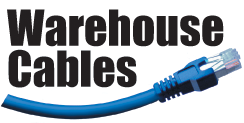UNDERSTANDING USB
Most computers and electronic devices have some form of USB connection, and many devices also come packaged with a USB cable.
What are all these different cables for, and why does it matter which one you use?
It can be somewhat complicated to wrap your head around all this. Here’s everything you need to know about the USB standard.
Types of USB Connectors
USB is supposedly universal, but there are so many different types. Why is this? As it turns out, they each serve different functions,
mainly to preserve compatibility and support new devices.
Here are the most common types of USB connectors.
-
Type-A: The standard flat, rectangular interface that you find on one end of nearly every USB cable.
Most computers have multiple USB-A ports for connecting peripherals. You’ll find them on game consoles, TVs, and other devices too. This cable only inserts in one way.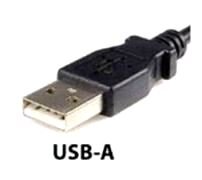
-
Type-B: An almost square connector, mostly used for printers and other powered devices that connect to a computer.
They’re not very common these days, as most devices have moved onto a smaller connection.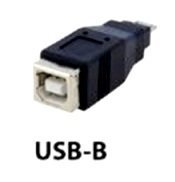
-
Mini-USB: A smaller connector type that was standard for mobile devices before micro-USB.
While not as common today, you’ll still see these on some cameras, the PlayStation 3 controller, MP3 players, and similar.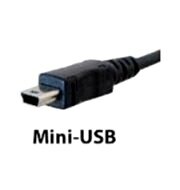
-
Micro-USB: The current standard (though slowly declining in popularity) for mobile and portable devices, which is even smaller than mini-USB.
While you’ll still find micro-USB on all sorts of smartphones, tablets, USB battery packs, and game controllers, some have moved onto USB-C.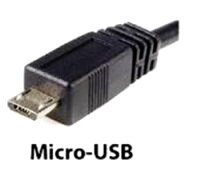
-
Type-C: The newest USB standard, this is a reversible cable that promises higher transfer rates and more power than previous USB types.
It’s also capable of juggling multiple functions. You’ll see it on many new laptops and smartphones, including the MacBook, Pixel phones,
and Nintendo Switch Pro Controller. We discuss USB-C more below.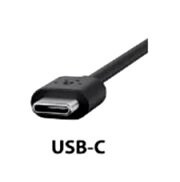
In most cases, you’ll find USB cables have one standard type-A end and one type-B end of some sort. The type-A end powers the device, while the type-B end receives power. This is to prevent potential damage that would be caused by connecting two computers via USB-A, for example.
The Mini and Micro connectors are considered smaller forms of type-B, even though “type-B” is usually not in their name.
In general, the cables you’ll use the most, and therefore need to replace, are micro-USB, and USB-C.
USB SPEED STANDARDS
USB connection types are only half of the story, as USB has also gone through multiple standards of varying data transfer speeds.
The cable’s connector doesn’t necessarily mean it uses a certain standard.
The three main iterations of USB’s speed are:
-
USB 1.x was the original standard, and is ancient by modern benchmarks. You’re very unlikely to find devices using this standard nowadays.
-
USB 2.0 introduced many modern USB norms, including support for Mini and Micro cables, USB OTG (see below), and more. It’s the slowest speed of USB still used today. You’ll find it used on cheap flash drives, devices like mice and keyboards, and similar. Most computers also include a few USB 2.0 ports.
-
USB 3.x is the current standard for USB speeds. It’s much faster than USB 2.0, and thus recommended for devices like external hard drives. You can typically identify a USB 3.x port or connector by its blue coloring. Many USB 3.0 ports also have an SSsymbol (which stands for Super Speed). Most new computers have at least one USB 3 port, and good-quality flash drives use this standard.
You can use a USB 2.0 device in a USB 3 port, or a USB 3 device in a USB 2.0 port, but neither setup provides the extra speed benefit.
The below chart shows what connector types are compatible with which standards. Notice that micro-USB devices that support USB 3.x have a different plug. You’ll frequently see this on external hard drives.
USB C - The New Kid on the Block
So what is USB C ?
USB-C is an emerging standard that has lots of promise. It’s smaller, reversible, and fast. USB-C can both receive and provide a lot more power than previous versions of USB. In fact, Apple’s MacBook line only has a single USB-C port, with the new MacBook Pros packing several-C ports.
Aside from data transfer, USB-C can also power devices, output display to a monitor, and more. Unlike USB-A, cables with USB-C connectors on both ends are standard and allow full utilization of its powers. However, USB-C to USB-A cables are also common, allowing for compatibility with older devices.
Your phone or tablet might use USB-C instead of micro-USB. Some laptops and tablets feature a USB-C port; the Nintendo Switch uses it for power too. Since USB-C hasn’t been adopted everywhere yet, you might need to buy some USB-C to USB-A adapters to ease the transition.
What the heck is USB OTG ?
USB On-The-Go (OTG) is a standard available on many Android phones that allows portable devices to act as USB hosts.
Let’s say you have an external drive, a smartphone, and a laptop. What do you do if you want to move files from the external drive to the smartphone? The most straightforward method is to move files from the external drive to the laptop, then from the laptop to the smartphone.
With USB OTG, the smartphone can actually host the external drive, thus bypassing the need for the laptop altogether. And that’s just one of the many ways to use USB OTG.
To use USB OTG, you’ll need a suitable adapter.
If your phone has a USB-C port, try a USB OTG adapter instead.
Unfortunately not all devices support OTG. If you’re not sure, check your phone’s manual or download a USB OTG checker app.
If you are still unsure please give us a call, we are here to help.
866-738-8993
Fast • Convenient • Affordable
Thanks for visiting our website; we hope to have the opportunity to serve you!
